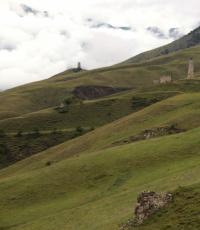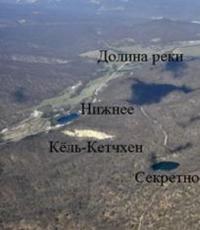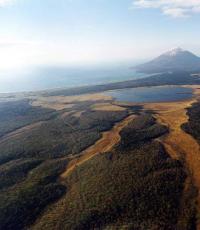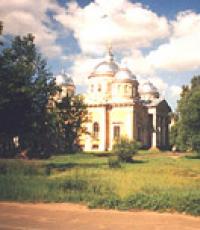Kabardino Balkaria blue lake is an unusual story. Blue lakes of Kabardino-Balkaria. Camp sites, how to get there, rest. Local residents claim that under the water column rests
Deep-sea research of the famous Blue Lake in Kabardino-Balkaria makes it possible to make valuable scientific discoveries and confirm the version of the existence of a system of caves in the water column. However, the repeated death of divers while diving into the lake forces researchers to resort to the help of equipment for which they do not have the funds. The authorities are only interested in the development of lakeside infrastructure.
So far, no serious deep-sea studies of the lakes have been carried out. The first dives showed that the lake is a karst sinkhole, while not a single river flows into it, but one small river flows out of it.
For science, the study of this reservoir is of great importance. Based on the results of the study, it will be possible to understand how groundwater moves, how the caves are located, what is their length. Thanks to these studies, scientists will be able to obtain objective knowledge about minerals in the entire Central Caucasus.
In January of this year, the first large-scale research expedition to study Blue Lake was completed. At a press conference on the results of the project Blue lake Awareness, director of research center Igor Galayda announced the official resumption of research work to study the unique Blue Lake and its composition. To begin with, scientists want to prove the existence of a cave system at the bottom of the lake.
We have already discovered that the river flowing out of the lake takes out 35-50 cubic meters. m of gypsum per day, and this proves the presence of a significant cave system in its depths. However, work on the study of the lake has not yet been completed, as at the moment there are more questions than answers.
SMARTNEWS HELP
Blue Lake in the Cherek region of the republic is the second deepest lake in Russia after Lake Baikal. Its depth is 258 m. It never freezes, and its temperature remains unchanged - 9 degrees above zero. Exploration of Blue Lake this year has not been without casualties. On January 13, a scuba diver from Moscow died from barotrauma of the lungs. Andrey Rodionov, who was part of the UK diver support team Martin Robson. Six days later, misfortune happened to Robson himself: during a risky dive to a depth of 209 m at a depth of 50 m, he became ill. He was taken to the hospital and has now fully recovered. In the summer, on August 30, a 42-year-old diver from Israel died Dmitry Sapozhnikov, who tried to conquer a depth of 120 m. At the appointed time, he did not come out of the depth. His body was lifted from 210 m.

In order not to torment people, we planned to acquire a special robot that is capable of descending to great depths and scanning space. The Falcon robot is expensive, about 7–8 million rubles, and works according to several parameters. Thus, it is possible to explore the lake and its underwater part without immersing a person.
SMARTNEWS HELP
"Falcon"- a new generation underwater vehicle designed to perform search and survey work in coastal sea or inland waters. "Falcon-1000" is designed to perform work at working depths up to 1000 m, both in narrow tunnel passages and in the open sea.
Blue Lake is part of a group of five karst lakes in the Cherek region of Kabardino-Balkaria, together with the Lower Blue Lakes (Tserik-Kel and Cherek-Kel) and the Upper Blue Lakes (Dry and Secret). Tourist routes near the lake are supposed to be ring-shaped.
– The longest route will be about 8 km. These are Lower Blue Lakes, Upper Blue Lakes - Secret Lake, Dry Lake. We want to build more points for health checks and cafes without alcoholic beverages,” he added in an interview. smartnews Makhti Temirzhanov. “We also want to combine this tourist zone with the Cherek gorge and develop its infrastructure. Make a cable car, from where you can see Kazbek, Elbrus, and the entire Caucasus Range. We are interested in this, because these are additional jobs.
SMARTNEWS HELP
According to one of the legends, at the bottom of the Blue Lake is the cavalry of Tamerlane, and possibly Alexander the Great himself, in full combat gear. There is a version that deposits of German and Romanian military equipment, which were abandoned during the retreat, are definitely stored there.

Blue Lakes is a group of five karst lakes in the Cherek region of Kabardino-Balkaria. Located at the foot of a rocky ridge, from where the Cherek-Balkar gorge begins. The uniqueness of the Lower Blue Lake lies in the fact that with a relatively small surface (only 235x130 m), it has a depth of 258 meters. The surface water temperature in winter and summer is about +9.3C. Not a single stream or river flows into the lake, but about 70 million liters of water flows out daily. At the same time, the level of the lake is unchanged, which is explained by powerful underwater sources. The water is blue from the presence of hydrogen sulfide in it and the refraction of light rays in a deep pool.

Located at the entrance to the gorge, Blue Lake is a unique natural phenomenon, interesting not only for Kabardino-Balkaria, but also on a national scale. Lower Blue Lake has several names: Chirik-kel (balk.) - rotten (stinking) lake; Sherej-ana (kab.) - Cherek's mother; Psykhurei (kab.) - round water (lake), natural artesian well. The flora and fauna of the lake is very poor due to the presence of hydrogen sulfide.
There is a legend among the local population about the origin of this lake. Once on the territory of Kabardino-Balkaria lived the fearless hero Bataraz, who defeated the evil dragon in a duel. And when the dragon collapsed, a hole formed in the mountains, which was filled with water. The dragon to this day lies at the bottom of this lake and sheds tears, thereby filling the lake with water and an unpleasant odor.

However, the nature here is quite picturesque: green hills, dense beech forests on steep slopes, and in the distance, in a blue haze, peaks sparkling in the sun. Closer to Babugent, the greenery becomes brighter, juicier. Near the village of Babugent there is a fork in the road. At the beginning of the road to the lake, there is a cave in the rock, in which traces of an ancient site of the 5th-10th centuries AD were found. Now many bats settle there, and sometimes, in bad weather, shepherds with flocks of sheep hide.



Not reaching the lake 200 meters, from the main road to the left, a gravel road leading to the Upper Blue Lakes goes uphill in a serpentine. On a plateau, 500 meters above the lower lake, there is Dry Lake. The Balkars call it Kel-ketkhen (Gone Lake), since the lake itself (by the area of the water surface is 2 times larger than the lower lake) is located in a 160-meter-deep sinkhole.

On the slope, 2 km from the lower lake, in a beech forest is the Secret Lake (so named because it is difficult to detect) 17 meters deep and smaller in area than the lower lake. The Balkars call it Tasha-Kel (Stone Lake).


The mystery of the Blue Lake in Kabardino-Balkaria - one of the deepest in Europe - has remained unsolved.
There are 8 million karst lakes in the world. Blue Lake is the deepest. Accurate data on the depth of the lake does not exist, and unmanned underwater vehicles were able to descend only to a depth of 365 meters. Scientists understand how it formed and what's down there.
The last time Blue Lake was explored was in the 1920s. It is known that its level can change several times a day. For what reason - scientists still do not know.
The blue lakes of Kabardino-Balkaria are located in the Cherek Gorge. There are 5 lakes in total. All of them have a karst nature of education.

Lower Blue Lake is the most interesting and unique. It is located at around 809 meters above sea level. It has a total water surface area of just over two hectares, and its depth is 386 meters. But there are suggestions that the depth of the lake is much greater, because no one has yet reached its bottom. In terms of its depth, this lake ranks third in Russia after Teletskoye in Altai and Baikal. The uniqueness of the lake also lies in the fact that not a single river flows into it, and about 70 million liters of water flows out per day.
Tserik-Kel - this is how the locals call this lake, which in translation means like a rotten lake. There is a legend among the local population about the origin of this lake. Once on the territory of Kabardino-Balkaria lived the fearless hero Bataraz, who defeated the evil dragon in a duel. And when the dragon collapsed, a hole formed in the mountains, which was filled with water. The dragon to this day lies at the bottom of this lake and sheds tears, thereby filling the lake with water and an unpleasant odor.
Directly from the water's edge, you can see sheer walls that go into the depths, and from what you see, you get the impression that this is a huge well. Depending on the time of day and weather, the shades of water are constantly changing and have different colors. The water temperature in the lake in winter and summer is the same +9.3, so the lake never freezes.
Upper Blue Lakes are 2 lakes, Eastern and Western. Also, these lakes are called Communicating. A dam has been built between them, and water from the East Lake flows into the West. The East Lake is larger and deeper than the West. There are fish in these lakes.
The secret lake is located near the Upper Blue Lakes. And it is named so because it is located in a deep karst funnel, overgrown with a dense beech forest.

A dry lake, or it is also called the missing one, was formed in a large karst failure with sheer walls reaching a depth of up to 180 meters. Previously, this failure was completely filled with water, but as a result of the shuddering of the mountains, the lake disappeared and remained only at the bottom of the canyon.





